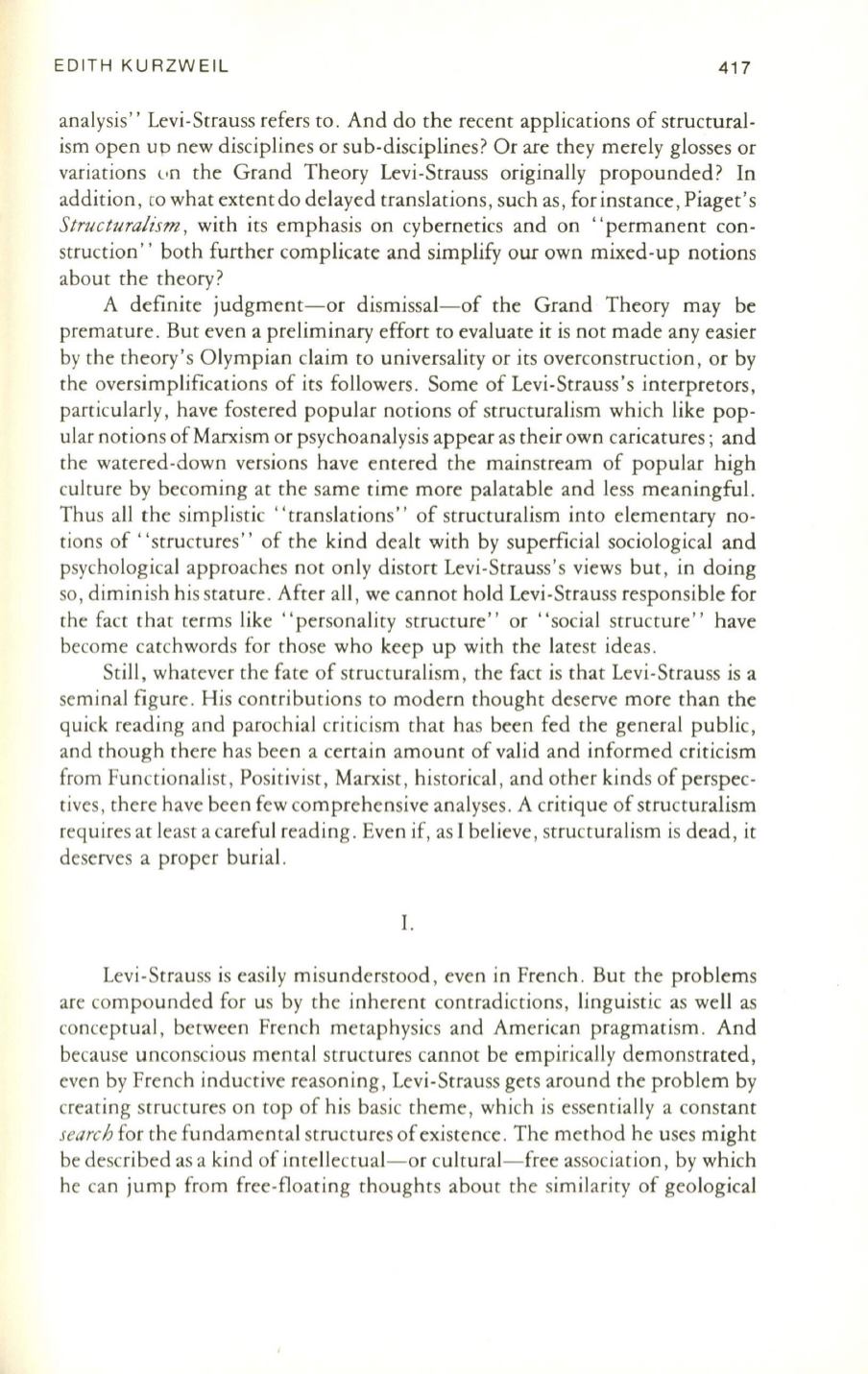
EDITH KURZWEIL
417
analysis" Levi-Strauss refers to. And do the recent applications of strucrural–
ism open up new disciplines or sub-disciplines? Or are they merely glosses or
variations l,n the Grand Theory Levi-Strauss originally propounded? In
addition,
co
what extent do delayed translations, such as, for instance, Piaget' s
Structuralism,
with its emphasis on cybernetics and on "permanent con–
struction" both further complicate and simplify our own mixed-up notions
about the theory?
A definite judgment-or dismissal-of the Grand Theory may be
premature. But even a preliminary effort to evaluate it is not made any easier
by the theory's Olympian claim to universality or its overconstruction, or by
the oversimplifications of its followers. Some of Levi-Strauss's interpretors,
particularly, have fostered popular notions of structuralism which like pop–
ular notions ofMarxism or psychoanalysis appear as their own caricatures; and
the watered-down versions have entered the mainstream of popular high
culture by becoming at the same time more palatable and less meaningful.
Thus all the simplistic "translations" of structuralism into elementary no–
tions of "structures" of the kind dealt with by superficial sociological and
psychological approaches not only distort Levi-Strauss's views but, in doing
so , diminish his stature. After all, we cannot hold Levi-Strauss responsible for
the fact that terms like "personality structure" or "social structure" have
become catchwords for those who keep up with the latest ideas.
Still, whatever the fate of structuralism, the fact is that Levi-Strauss is a
seminal figure. His contributions to modern thought deserve more than the
quick reading and parochial criticism that has been fed the general public,
and though there has been a certain amount of valid and informed criticism
from Functionalist, Positivist, Marxist, historical, and other kinds of perspec–
tives, there have been few comprehensive analyses. A critique of structuralism
requires at least a careful reading. Even if, as I believe, structuralism is dead, it
deserves a proper burial.
1.
Levi-Strauss is easily misunderstood, even in French. But the problems
are compounded for us by the inherent contradictions, linguistic as well as
conceptual, between French metaphysics and American pragmatism. And
because unconscious mental structures cannot be empirically demonstrated,
even by French inductive reasoning , Levi-Strauss gets around the problem by
creating structures on top of his basic theme, which is essentially a constant
search
for the fundamental structures ofexistence. The method he uses might
be described as a kind of intellectual-or cultural-free association, by which
he can jump from free-floating thoughts about the similarity of geological


